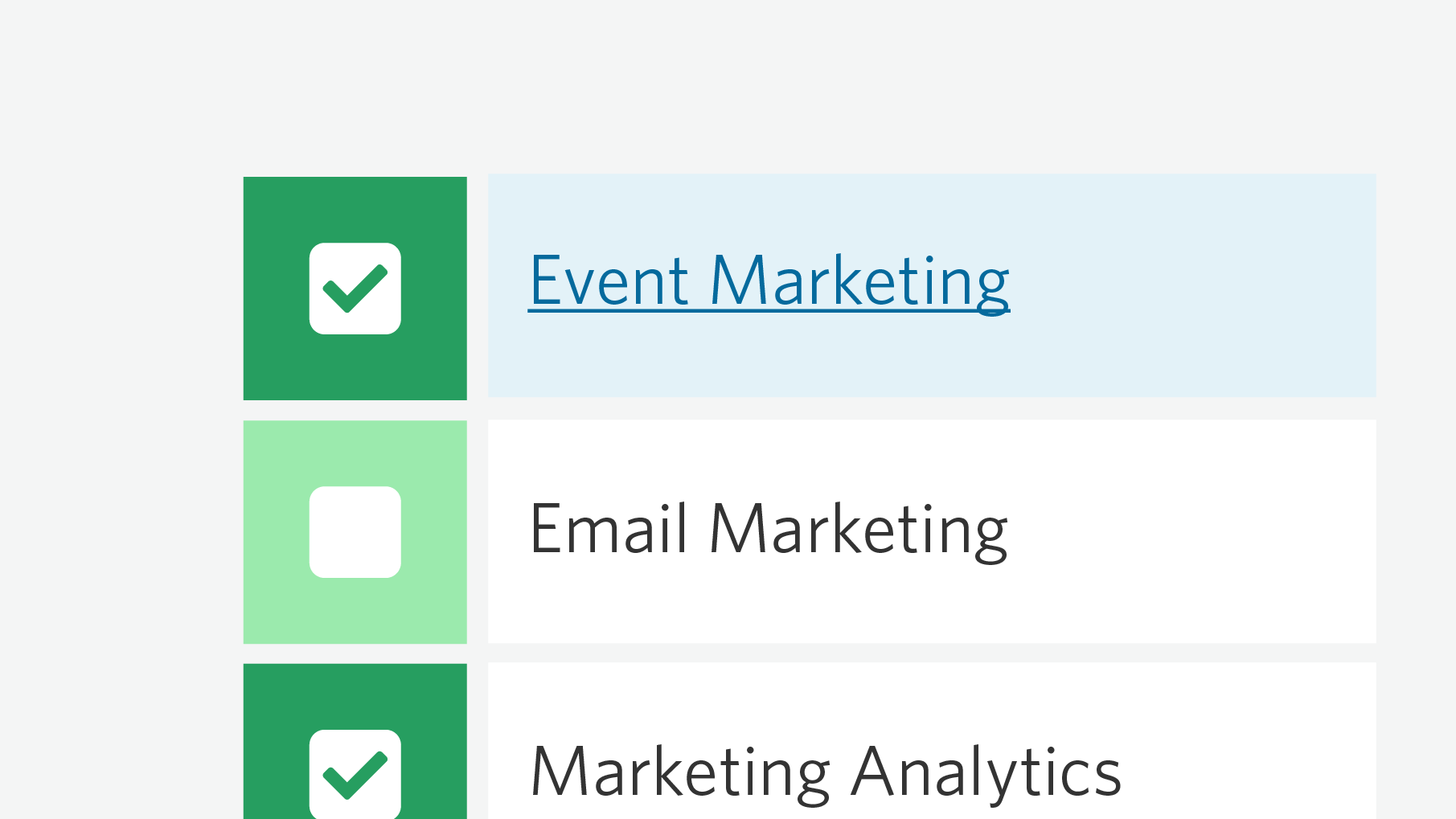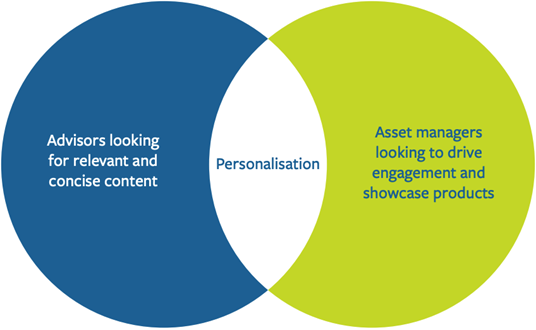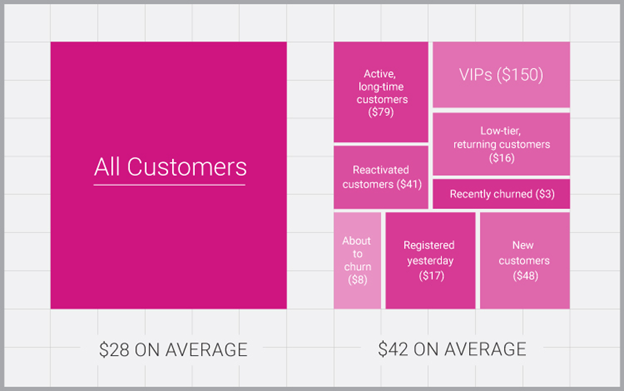Not sure what to do about clients unsubscribing from your emails? A preference center could be the key — giving clients a choice in what they receive from you, when, and how. So instead of opting out completely, clients can opt down. No shady tactics here. Doesn’t that sound like a win-win?
Let’s dive into why it works and best practices for doing it right.
What’s so great about preference centers?
The #1 reason people say they unsubscribe from emails is because they get too many. But if you dig in deeper, what it’s really about is too many irrelevant emails.
Our Bridging the Divide report revealed nearly 75% of advisors frequently receive emails from their asset manager partners that aren’t relevant to their needs.
Preference centers are an oft-overlooked tool to collect zero-party data on what your clients want so you can segment and deliver the personalized messages they’ll actually engage with.
The result? Marketers see up to a 760% increase in email revenue with segmentation, according to the Direct Marketing Association. This is further backed by Optimove research whose massive dataset proved that smaller segments lead to bigger results versus one message to the larger group.
Image source: Optimove
And with growing privacy concerns and the end of third-party cookies on the horizon, it’s more crucial than ever to lean into your zero- and first-party data. The preference center is now a key player in this new marketing world.
What are best practices?
You can’t just throw together a preference center and call it a day. Consider it like a promise you’re making to your clients. With that in mind, here are some tips to get started on the right foot.
Follow the law
First, make sure you’re compliant with all anti-spam, data, and privacy laws of the regions your clients are in. At a very high level:
- You still must have an explicit unsubscribe link in your email marketing.
- If you link your unsubscribe text to your preference center instead, then you cannot require a login or anything more than an email address and must provide one click to unsubscribe from everything.
To simplify things, we suggest using the strictest law — usually GDPR — to dictate your permission practices. But if you have the resources and clean data to create dynamic preference centers, and think it’s best for your business, go for it!
Consider the options
Now for the fun part: What preferences should you offer clients? The options typically fall into four categories:
- Email lists or content
- Interest or topics
- Frequency or timing
- Marketing channel
Lists or content are things like newsletters and events. You might have several different newsletters, one for market commentary and one for product updates.
Topics take it one step further by being specific about the content. What are your clients interested in? This could be specific funds or geographies. For example: mutual funds, real estate, or European markets.
Frequency options could be a cadence like weekly or monthly as well as particular times like Tuesdays or Fridays.
Preference centers aren’t just for emails and can be used to capture how clients like to receive some communications: email, SMS, mobile app push notifications, or even physical mail.
You aren’t limited to just one category, either. Use as many as you can support that make sense for you.
But don’t overdo it
Having too many choices can overwhelm your clients, throwing them into choice paralysis. (It can also look like you’re going to email them a lot.) When this happens, they take the easiest route: unsubscribe.
So keep your preference center simple and on one page only. Prioritize what you need most to deliver a personalized and engaging email and marketing communications program.
Set expectations (and keep them)
Give your clients an idea of what they could be getting with each option and when. A vague name like “Newsletter” is a disservice to the value your newsletter actually brings. An even vaguer name like “The Summit” gives no indication that this is your newsletter. Both of these are fine if you supplement them with a short description like, “Your biweekly dose of tips to help you reach your client’s investment goals.”
Follow this easy formula:
- What it is
- Why it’s worth it
- How often it’ll be sent
And whatever choices you decide to give, honor them. So only offer what you can actually deliver. For example, if you provide preferences on interests like NFTs and international markets but don’t have the content or programs to support them, nix them.
Design an exceptional brand experience
Whether your preference center lives on your website or is hosted by your email provider, it’s still an extension of your brand and should be treated as such. This means making it on-brand, mobile-friendly, and delightful.
It’s easy to stick with the default preference center design your ESP gives you, but customizing it to be on brand is especially important for financial services because of trust and credibility. You don’t want your clients thinking they’ve gone to the wrong page or worse, that you’ve been hacked.
Part of the experience is also ensuring it can be experienced by everyone. This means being mobile-friendly and accessible to people of all abilities. Is your preference center usable on all screen sizes? Easy to see and understand?
Last but not least, keep it pleasant and don’t make it difficult. Even if a client ultimately decides to leave your list, they may still be a client. And if they aren’t, they could refer others to your business. So make sure your clients always leave on a great note.
Promote it!
Don’t let your preference center languish in your email footer. Your welcome series and re-engagement campaign are both prime places to dedicate a full email to promoting your preference center. By being intentional, you’re not only letting clients know you care about what they want but also that your preference center even exists.
Usually when someone scrolls to your email footer to unsubscribe, they’ve already made up their mind and are less likely to be swayed by preferences. Get ahead of that.
Final thoughts
While you can’t keep every client subscribed forever, you can minimize the churn with a preference center by appealing to those who still want to hear from you — just not about everything all the time. Follow the best practices we just shared, and you’ll be well on your way to delivering personalized marketing communications your clients can’t wait to get from you.
Need some help getting started? Check out StoneShot’s marketing automation platform and agency services. You’ll get superior customer service with real people who care — not a faceless organization that treats you like a number. If you want to learn more, let’s chat.








